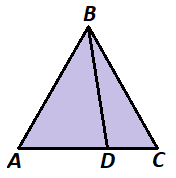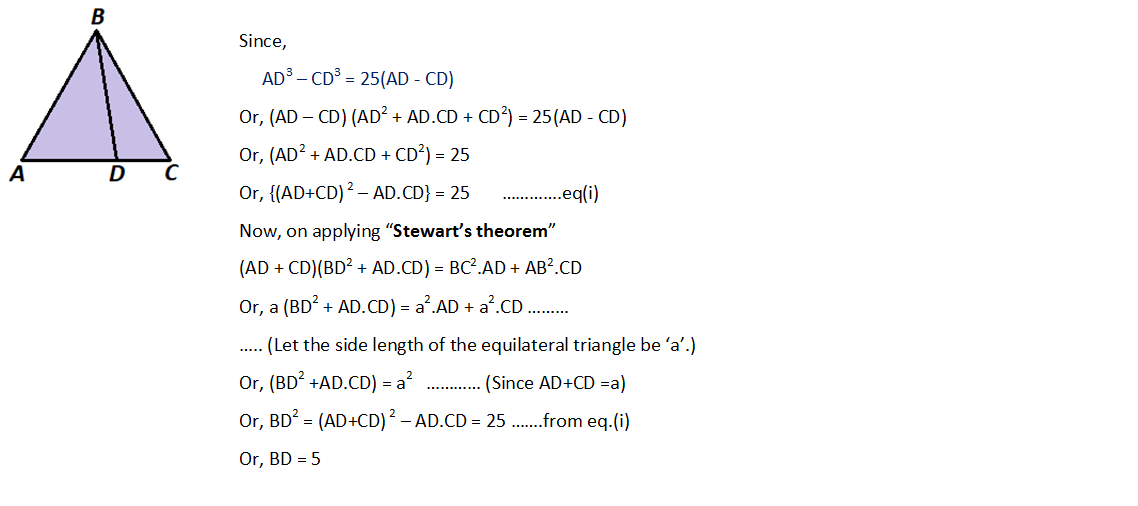Cubes in a Triangle?

B D is a cevian of equilateral △ A B C such that A D 3 − C D 3 = 2 5 ( A D − C D ) and A D = C D .
Find B D .
The answer is 5.
This section requires Javascript.
You are seeing this because something didn't load right. We suggest you, (a) try
refreshing the page, (b) enabling javascript if it is disabled on your browser and,
finally, (c)
loading the
non-javascript version of this page
. We're sorry about the hassle.
3 solutions

I hadn't heard of Stewart's theorem before, but it's very useful for this problem. Thanks for sharing!
Since the question implies that the equation holds for any A D = C D , consider the extreme case where C D = 0 .
Then A D 3 − 0 3 = 2 5 ( A D − 0 ) which solves to A D = 5 , and A D = A C = A B = B C = B D , so B D = 5 .
Let B D = x , the side length of △ A B C be a , A D = b , and C D = c . Then b + c = a and
b 3 − c 3 ( b − d ) ( b 2 + b c + c 2 ) b 2 + b c + c 2 = 2 5 ( b − c ) = 2 5 ( b − c ) = 2 5
Using cosine rule , we have:
{ B D 2 = A B 2 + A D 2 − 2 A B ⋅ A D cos 6 0 ∘ B D 2 = B C 2 + C D 2 − 2 B C ⋅ C D cos 6 0 ∘ ⟹ x 2 = a 2 + b 2 − a b ⟹ x 2 = a 2 + c 2 − a c . . . ( 1 ) . . . ( 2 )
( 1 ) + ( 2 ) : 2 x 2 ⟹ x 2 x = 2 a 2 + b 2 + c 2 − a ( b + c ) = 2 a 2 + b 2 + c 2 − a 2 = a 2 + b 2 + c 2 = ( b + c ) 2 + b 2 + c 2 = b 2 + 2 b c + c 2 + b 2 + c 2 = 2 ( b 2 + b c + 2 c 2 ) = b 2 + b c + 2 c 2 = 2 5 = 5 Since x > 0
Nice solution!